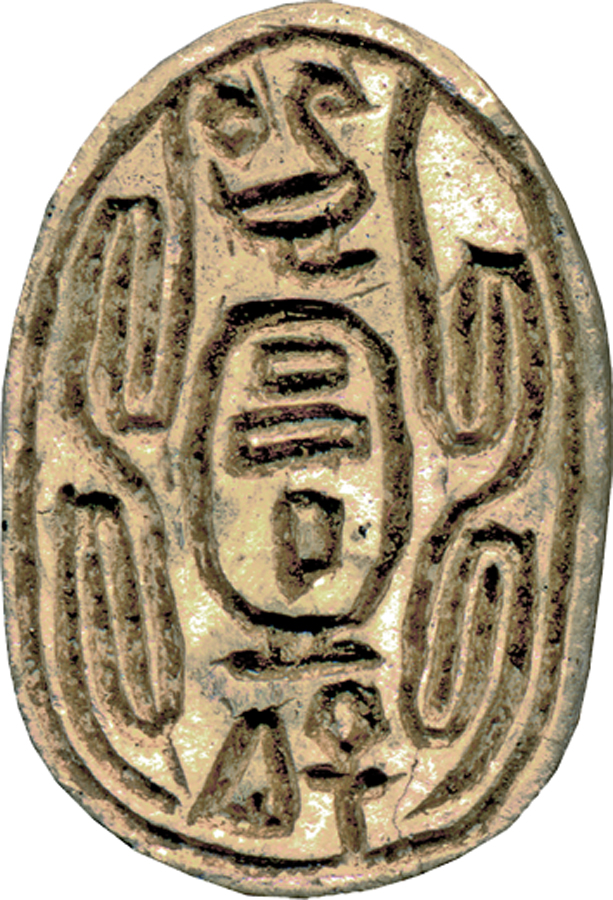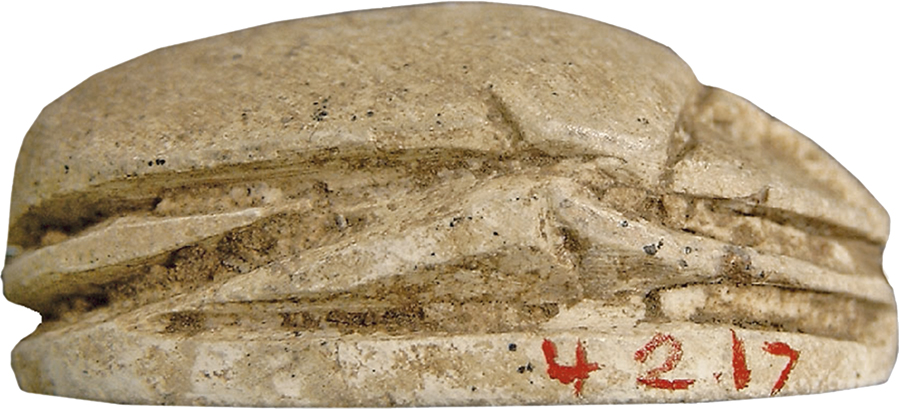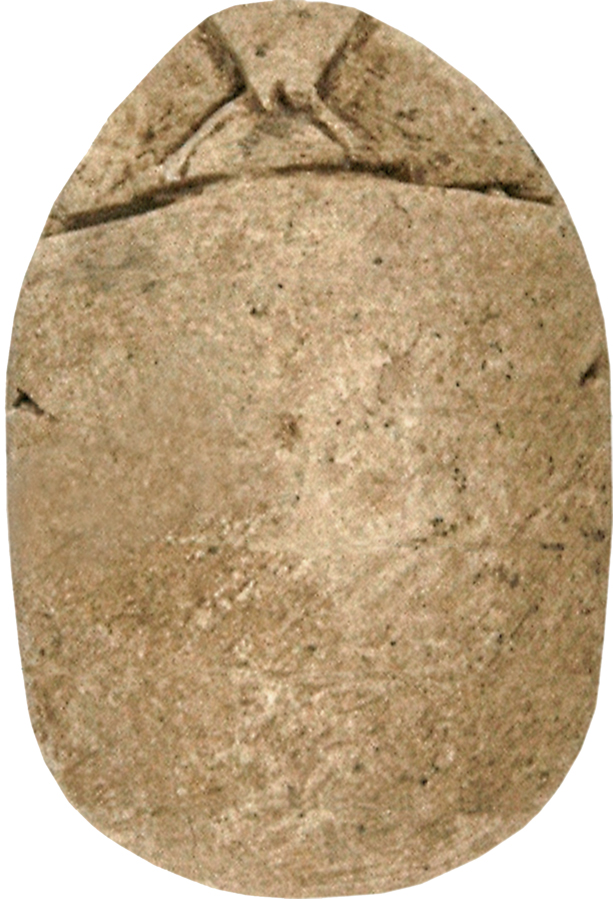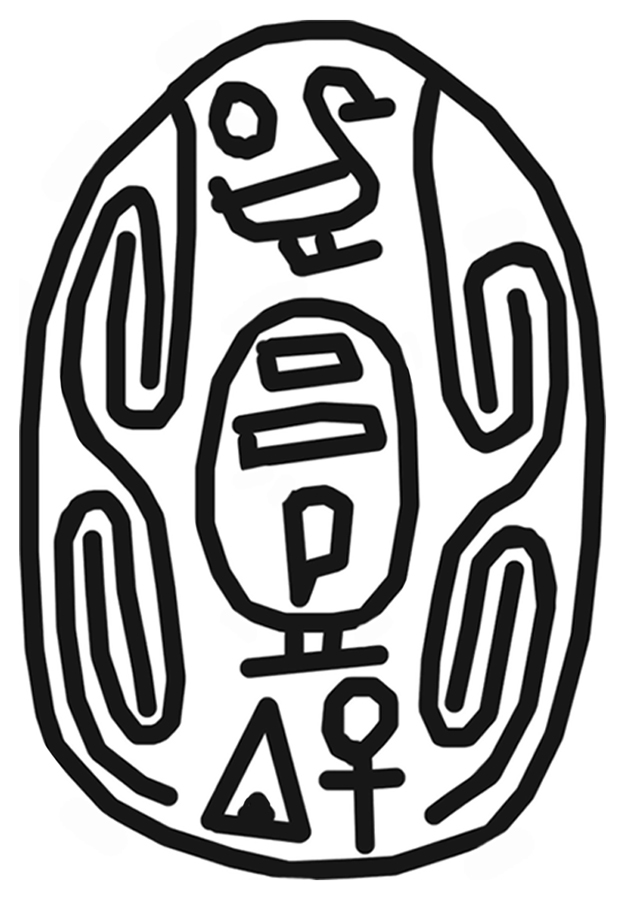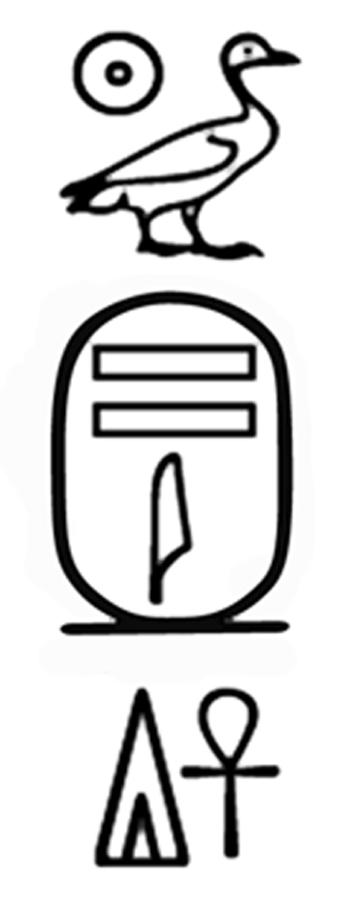Scarab with Cartouche of King Sheshi
The ancient Egyptians believed that the dung beetle, the Scarabaeus sacer, was one of the manifestations of the sun god. Representations of these beetles were used as amulets, and for ritual or administrative purposes.
This scarab is a typical example of the Second Intermediate Period. The bottom inscription contains the name and title of the King Sheshi, as well as a wish formula for his life. The highest point of the back is the pronotum (dorsal plate of the protorax). Two side-notches at shoulder height define the partition between pronotum and elytron (wing cases); these notches differ in shape and depth and are not aligned. The proportions of the top are slightly unbalanced, and the pronotum is asymmetrical Two incised circular lines define the partition between body and the oval base. The trapezoidal head is framed by borderlines and flanked by rectangular eyes. The trapezoidal side plates have curved outer edges, and the clypeus (front plate) a central base notch.
The scarab is longitudinally pierced, was originally mounted or threaded, and used as an amulet. Such an amulet should on one side secure the existence and divine monarchy for this king, and on the other provide its private owner with his royal patronage.
There are many scarabs with the name of king Sheshi (e.g. Baltimore, Walters Art Museum, 42.17 and 42.26), which were found in Egypt, Nubia, and Palestine; nevertheless, there are no other monuments or historical records. It is likely that the throne name of Sheshi was Maat-ib-Re, and scarabs with this name were similar popular and widespread. The identification of Sheshi with a Hyksos rulers or one of the Hyksos vassals is likely, but not positive. Furthermore, it was several times considered to interpret the name as a variant of the name of the Hyksos ruler Apepi.
Inscription
Provenance
Provenance (from the French provenir, 'to come from/forth') is the chronology of the ownership, custody, or location of a historical object. Learn more about provenance at the Walters.
Henry Walters, Baltimore, 1911 (?) [mode of acquisition unknown]; Walters Art Museum, 1931, by bequest.
Geographies
Palestine
(Place of Origin)
Egypt (Place of Origin)
Measurements
H: 3/8 x W: 9/16 x L: 7/8 in. (1 x 1.5 x 2.2 cm)
Credit Line
Acquired by Henry Walters, 1911 (?)
Location in Museum
Not on view
Accession Number
In libraries, galleries, museums, and archives, an accession number is a unique identifier assigned to each object in the collection.
In libraries, galleries, museums, and archives, an accession number is a unique identifier assigned to each object in the collection.
42.17

